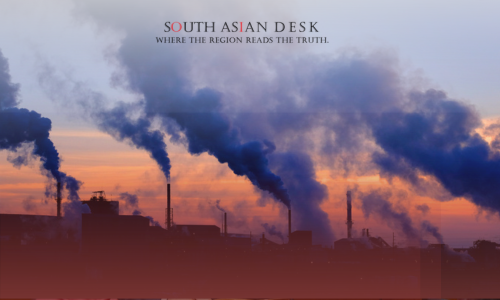Coal-based power plants are a major driver of intensifying heatwaves, posing a significant threat to the environment, public health, and regional ecosystems. These facilities emit vast quantities of greenhouse gases, particularly carbon dioxide and methane, which trap heat in the atmosphere and amplify extreme weather patterns. In South Asia, where coal remains a cornerstone of energy production, the environmental consequences are stark, with prolonged heatwaves disrupting agriculture, water resources, and biodiversity.
The link between coal plants and rising temperatures is well-documented. Burning coal releases not only greenhouse gases but also particulate matter like PM2.5, which degrades air quality and exacerbates health issues during heatwaves. In Pakistan, for example, 2024 saw record-breaking temperatures, with cities like Karachi and Lahore experiencing prolonged heatwaves that led to school closures, overwhelmed hospitals, and strained power grids. Posts on X have echoed public frustration, highlighting how coal reliance worsens these conditions, particularly in urban centers where heat islands amplify the problem. One user noted that Lahore’s air quality index spiked during a recent heatwave, linking it to nearby coal plants.
Beyond heatwaves, coal plants contribute to broader environmental degradation. Acid rain from sulfur dioxide emissions damages soil and water bodies, while coal ash disposal pollutes rivers and groundwater, threatening aquatic ecosystems. In South Asia, where rivers like the Indus are lifelines for millions, such pollution disrupts fishing and farming communities. Deforestation for coal mining further compounds the issue, reducing carbon sinks and accelerating climate change.
Transitioning to renewable energy offers a viable solution. Solar and wind power produce negligible emissions and can stabilize energy supplies without harming the environment. China, the world’s largest coal consumer, has made strides in this direction, with over 700 gigawatts of installed renewable capacity by 2024, according to recent data. South Asian nations could emulate this by investing in clean energy infrastructure and leveraging abundant sunlight and wind resources. For instance, Pakistan’s solar potential in Balochistan and Sindh remains largely untapped, despite its capacity to power millions of homes sustainably.
Policy changes are critical to reducing coal dependency. Governments can incentivize renewable energy adoption through subsidies and tax breaks while phasing out coal plants through strict regulations. Community-driven initiatives, such as reforestation and sustainable farming, can also mitigate environmental damage. Public awareness campaigns are equally important, as informed citizens can advocate for greener policies and hold industries accountable.
The environmental cost of coal power is undeniable. By prioritizing clean energy and sustainable practices, South Asia can curb heatwaves, protect ecosystems, and ensure a healthier future for its people.
Published in SouthAsianDesk, June 24th, 2025
Follow SouthAsianDesk on X, Instagram and Facebook for insights on business and current affairs from across South Asia.






